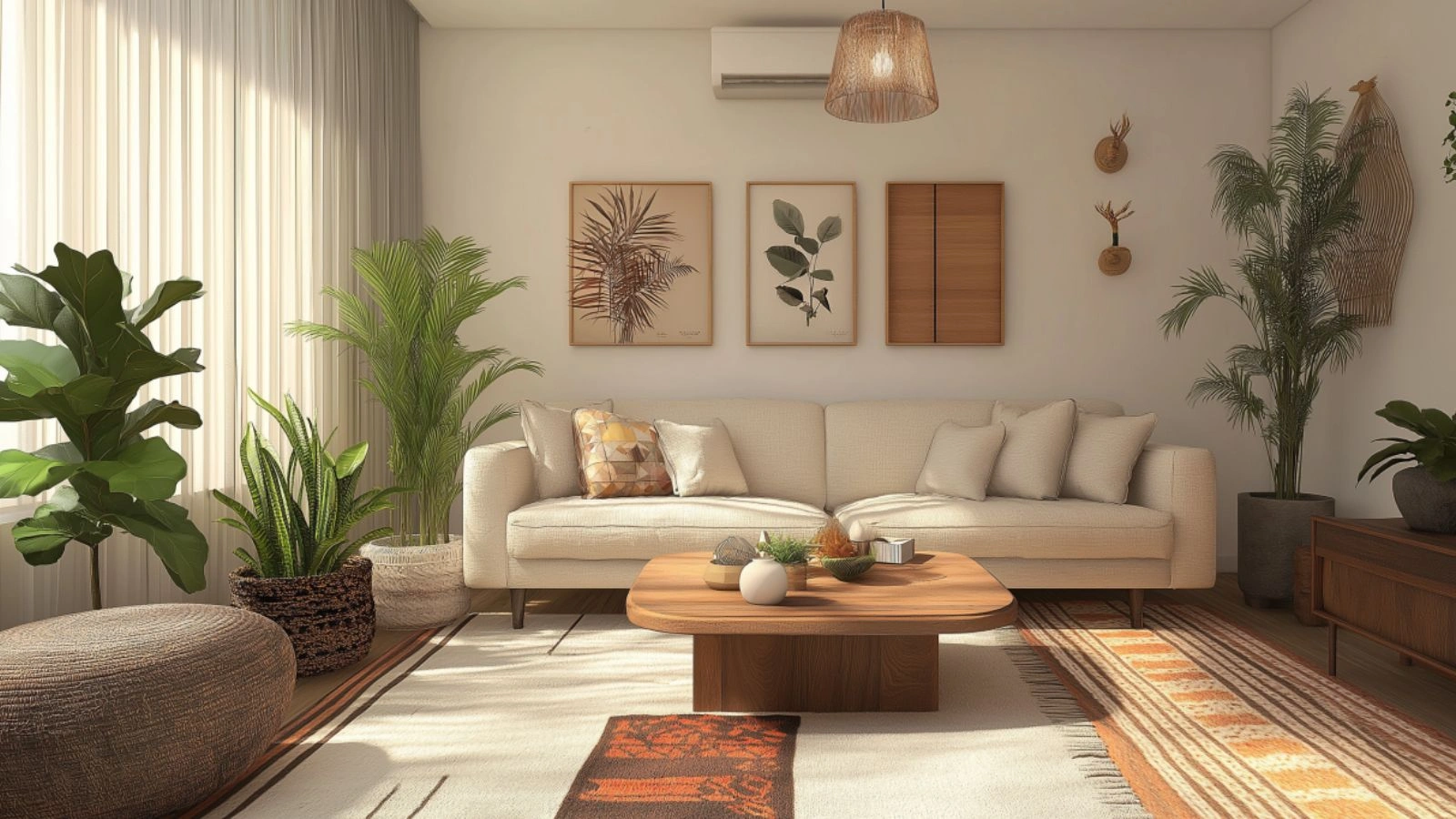Small Living Room Solutions That Maximize Space Without Sacrificing Style
Table of Contents
Living in a small space doesn’t mean you have to compromise on comfort or style. In fact, some of the most charming and curated living rooms are tucked into compact corners of city apartments, tiny homes, or cozy cottages. According to real estate trends, smaller living spaces are becoming more popular due to urban living and minimalist lifestyles—but designing these areas comes with unique challenges.
A small living room can easily feel cramped, cluttered, or closed in. But with thoughtful design choices, smart furniture layouts, and a few creative styling hacks, it’s possible to turn even the tiniest space into a welcoming retreat. From multifunctional furniture to light-enhancing techniques, the key is to blend function with form in every square foot.
This guide will walk you through practical, elegant small living room solutions that help you make the most of your space while keeping it stylish. You’ll find helpful visuals, image prompts, and detailed tips designed to elevate your living area—without needing to knock down walls or break the bank. Let’s dive into the strategies that will make your small living room feel expansive, efficient, and effortlessly chic.
Embrace Multi-Functional Furniture for Maximum Use

One of the smartest small living room solutions is choosing furniture that does double duty. When space is limited, every item should work harder. Think ottomans that offer storage, coffee tables that lift into desks, or sleek sofas that convert into beds for guests.
These pieces reduce the need for bulky extras, streamline your layout, and offer storage without taking up visual or physical space. Look for minimalist designs with hidden compartments and neutral tones to keep things cohesive.
Table: Best Multi-Functional Furniture Ideas for Small Living Rooms
| Furniture Piece | Dual Functionality | Best For |
|---|---|---|
| Storage Ottoman | Seating + hidden storage | Throws, books, remotes |
| Sleeper Sofa | Sofa + guest bed | Hosting in compact spaces |
| Lift-Top Coffee Table | Table + hidden storage or work surface | Working from home |
| Nesting Tables | Side tables + expand as needed | Flexible entertaining |
Opt for furniture with clean lines and raised legs to maintain a feeling of openness.
Use Light and Color to Open Up the Room
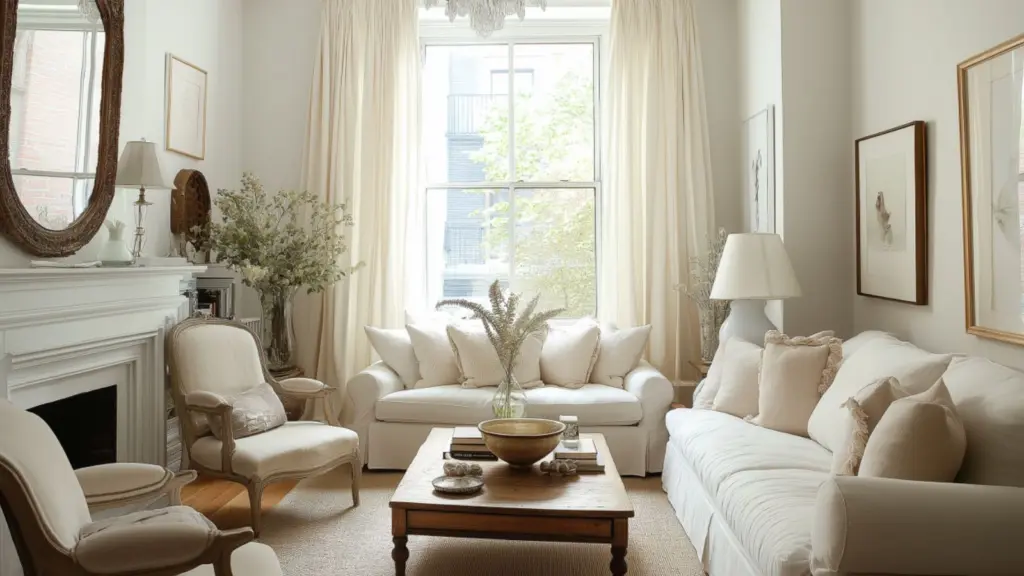
Color plays a crucial role in how spacious your room feels. Soft, light tones like whites, creams, soft grays, and pastels reflect more light, making the space appear larger. Darker shades tend to absorb light and can shrink a room visually.
Maximize natural light by keeping window treatments minimal—opt for sheer curtains or leave windows bare where privacy allows. Mirrors can also work wonders by reflecting light and creating the illusion of depth.
Visual Breakdown: Color and Light Tricks for Small Living Rooms
| Strategy | Effect on Space | Tips |
|---|---|---|
| Light Wall Colors | Expands space visually | Use warm white or soft beige |
| Reflective Surfaces | Enhances brightness and depth | Incorporate mirrors, glass |
| Sheer Curtains | Lets in more natural light | Layer with light blinds |
| Accent Wall in Soft Hue | Adds style without crowding | Use pale blue or sage green |
Layering textures and tone-on-tone shades can also add dimension while keeping the palette calm and airy.
Go Vertical with Storage and Decor
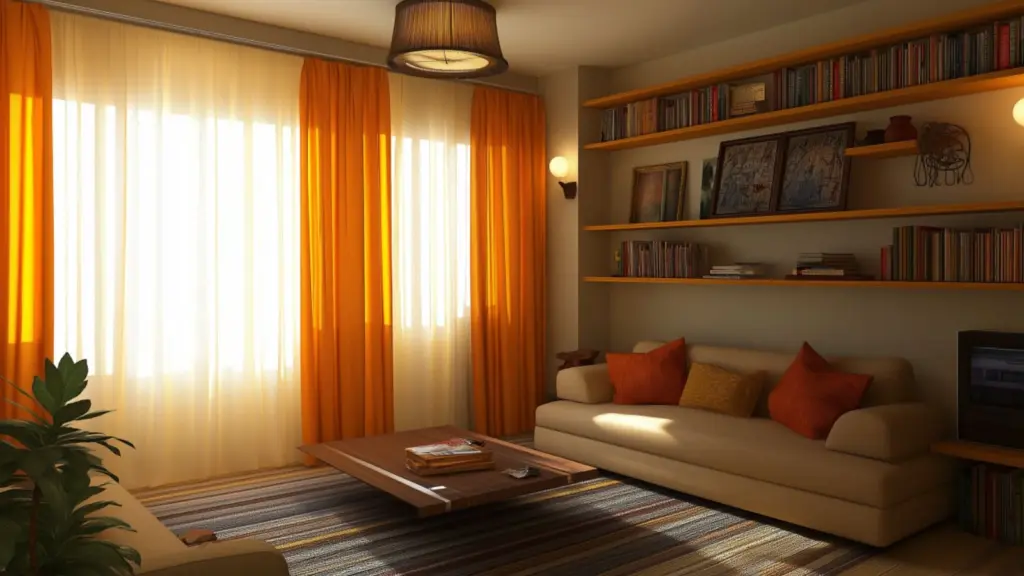
When floor space is limited, think upward. Vertical storage and decor solutions help you keep clutter off the ground and draw the eye upward, making ceilings feel higher and rooms more expansive.
Use tall bookcases, floating shelves, or ladder-style storage to take advantage of wall height. You can also hang artwork higher than eye level or install floor-to-ceiling curtains to add the illusion of height.
Checklist: Vertical Space Maximization
| Item | Use | Styling Tip |
|---|---|---|
| Floating Shelves | Display decor or store essentials | Keep them sparse and curated |
| Tall Bookcases | Vertical storage | Match to wall color for blend |
| Wall-Mounted Lighting | Free up floor or table space | Use adjustable sconces |
| Long Drapes | Enhance perceived ceiling height | Hang just below ceiling line |
Vertical lines—whether in paneling, curtains, or shelving—visually elongate and lighten the room.
Choose the Right Layout for Flow and Function
The layout of your furniture can make or break a small living room. A common mistake is pushing all furniture against the walls to “create space” in the middle. Ironically, this often results in awkward flow and wasted corners.
Instead, float furniture when possible—placing your sofa a few inches from the wall, or anchoring a seating area with a small rug can create zones and improve flow. Consider “L” or “U” shapes for seating to promote conversation while keeping pathways open.
Use a smaller-scale sectional if you need more seating, or opt for armless chairs to create visual lightness.
Content Table: Space-Smart Living Room Layouts
| Room Shape | Layout Solution | Notes |
|---|---|---|
| Square | L-shape layout with floating elements | Add a small coffee table |
| Long & Narrow | Linear layout with central rug | Add wall-mounted TV or desk |
| Small & Open-Plan | Zone with rugs and low-backed furniture | Keep views unobstructed |
Keep walkways clear (at least 24–30 inches wide), and scale furniture to your space—less is more.
Incorporate Smart Storage Without the Bulk
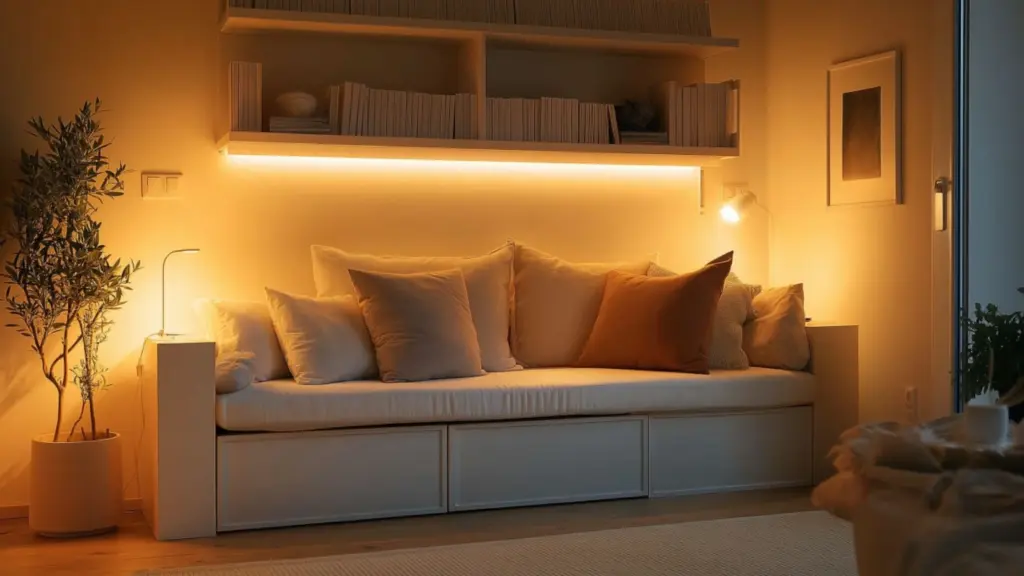
In small living rooms, storage must be both clever and subtle. Avoid bulky pieces that dominate the room. Instead, look for storage that blends in with your decor or doubles as furniture.
Built-in shelving around doorways, under-window benches, and under-sofa drawers are smart ways to stash essentials while keeping the room visually clean. Wall-mounted baskets or slim cabinets can also add storage without taking up much space.
Table: Storage Solutions That Save Space and Look Good
| Storage Type | Ideal Use | Styling Advantage |
|---|---|---|
| Storage Bench | Seating + hidden storage | Add cushions for comfort |
| Built-in Bookcases | Vertical storage | Customize to fit your walls |
| Wall Baskets | Lightweight, versatile | Adds texture and warmth |
| Slim Console Tables | Behind sofa or along entryway | Surface + drawer storage |
By keeping clutter out of sight, your living room instantly feels more spacious and serene.
Use Rugs to Define and Ground the Space
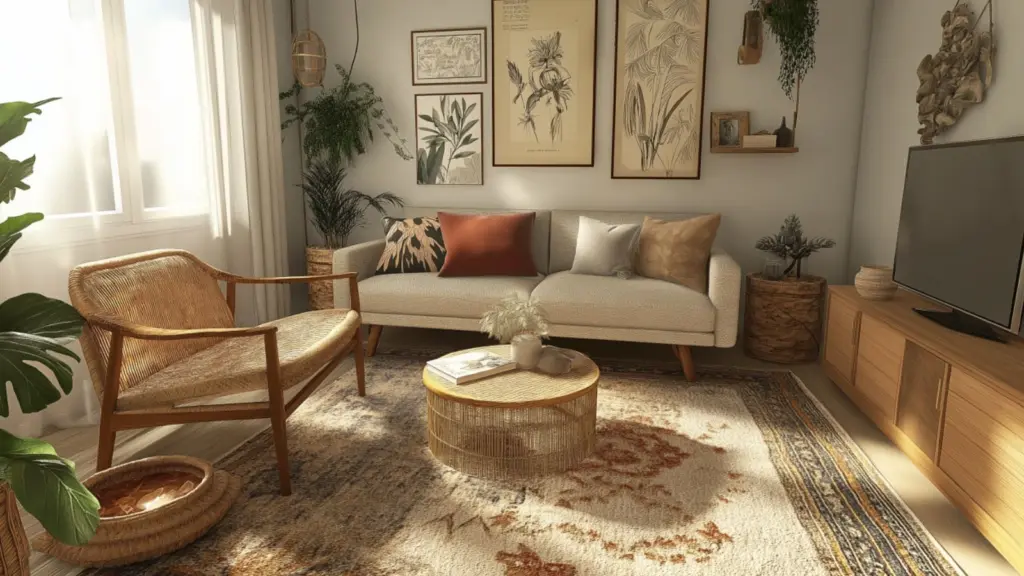
Rugs are more than just cozy accessories—they help define zones, add softness, and anchor your layout visually. In small living rooms, choosing the right size is key. A rug that’s too small will make the room feel fragmented, while the right size helps unify the space.
Opt for rugs that extend beyond the front legs of your furniture to visually pull everything together. Stick to lighter colors or low-contrast patterns for an open look.
Table: Rug Size Guidelines for Small Living Rooms
| Room Width | Ideal Rug Size | Tip |
|---|---|---|
| Under 10 feet | 5′ x 8′ or 6′ x 9′ | Front legs of furniture on rug |
| 10–12 feet | 8′ x 10′ | Anchor with coffee table |
| Narrow space | Runner or layered rugs | Adds movement and depth |
Layering a patterned rug over a larger neutral base can also add personality without overwhelming the room.
Add Personality with Minimalist Decor
Decorating a small space doesn’t mean you have to go sparse—it’s about choosing the right accents. Instead of many small items, opt for fewer, larger-scale pieces that make a visual impact without cluttering.
Think one oversized piece of art, a sculptural vase, or a statement plant. Group decorative items in odd numbers and vary their height to create visual rhythm.
Checklist: Stylish Minimalist Decor Ideas
| Decor Type | Suggested Item | Styling Tip |
|---|---|---|
| Wall Art | One bold piece or gallery | Use matching frames or tones |
| Tabletop Accents | Ceramic bowl, sculptural lamp | Stick to 2–3 items per surface |
| Greenery | Fiddle leaf fig, trailing ivy | Use natural woven baskets |
| Textiles | Throw pillows, cozy blanket | Stick to a consistent palette |
Intentional decor keeps your space feeling lived-in, not over-designed.
Conclusion
Designing a small living room doesn’t mean settling for less—it’s an opportunity to be thoughtful and intentional. By using multi-functional furniture, choosing light-enhancing colors, maximizing vertical space, and incorporating smart layouts, you can create a space that feels open, stylish, and truly functional. Each piece, each corner, serves a purpose and adds to the charm of your home. With the right touches, even the coziest living rooms can feel expansive, inviting, and entirely your own.

